The history of Soviet cassette players: Vilma stationary decks - creative plagiarism, innovation and the devil in the details
So, the next post about the bright and controversial history of Soviet tape recorders. This time we will consider stationary models from the Lithuanian factory “Vilma”. I will note at once that we will touch not all, but the most revealing and interesting specimens, which marked the transition from one generation to another, have left a significant mark, are collectible rarities or represent an original technical idea.
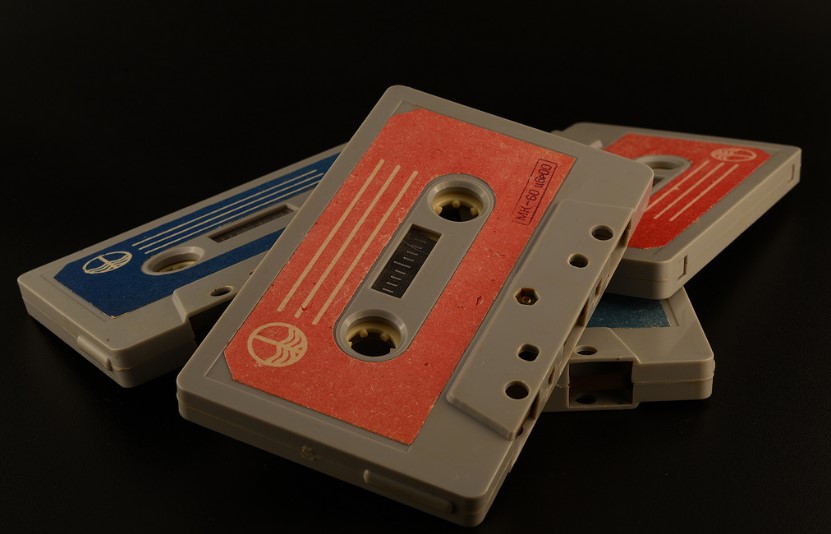
It is known that, as in the west, in the USSR portable models were ahead of stationary ones, which is not surprising. At the dawn of its appearance, compact cassettes, as the name implies, were developed, positioned and perceived as a carrier for portable devices. Unexpectedly for the creators of the format, its advantages were appreciated not only by reporters and representatives of special services, but also music lovers. Under the cut about what were the Soviet stationary tape recorders.
The first place in the development of the first stationary cassette tape recorders in the USSR belongs to the Lithuanian instrument-making plant Vilma. As in other cases with the Soviet innovations, they were preceded by the appearance of analogues in capitalist countries. So in 1970, the Dutch-based transnational corporation Philips, the developer and pioneer of the compact cassette recorder, released the Philips N 2400, a stationary cassette deck with a built-in amplifier and speakers.
')
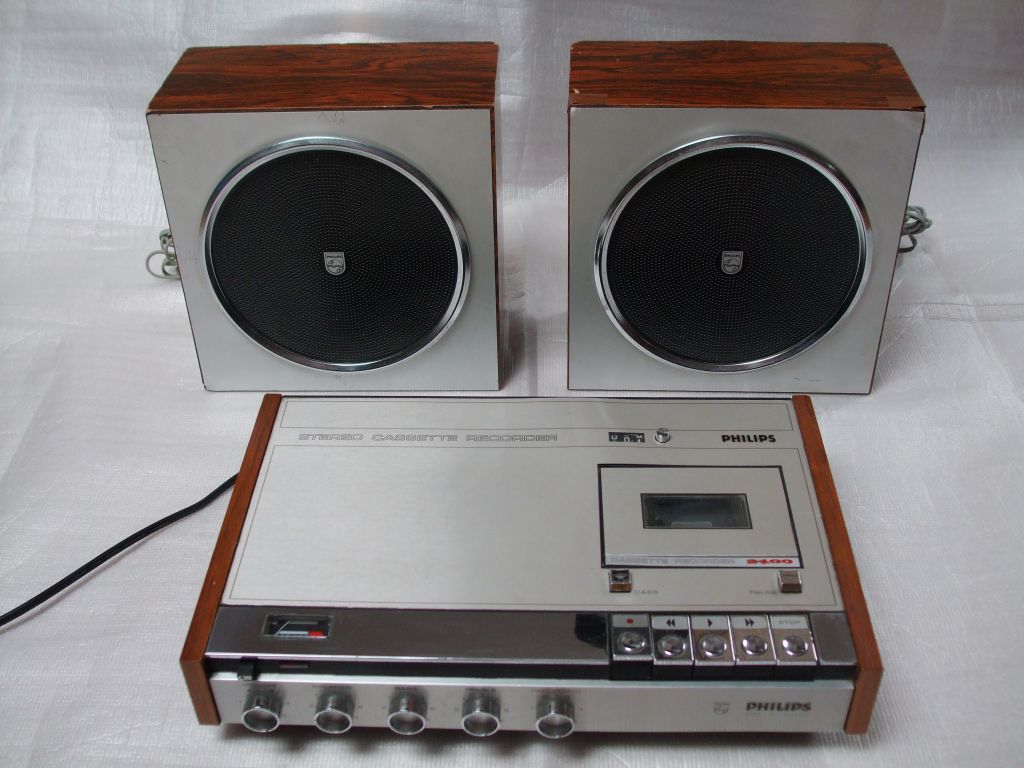
After two years, simplifying and slightly changing the design (removed the “extra” parts of the tape belt, threw out the tape counter, mirrored the arrangement of the functional elements), the Soviet stationary firstborn appeared under the name “Vilma-Stereo”. In the future, the tape recorder will receive a different name, namely “Wilma-302-stereo”. The amplifier has also undergone processing, the power of which has dropped one and a half times (Phillips RMS was 10 W, the nominal power of the Soviet product was 2 W - that is, RMS is about 7 W).

Philips N 2400 1971 model, open speaker included
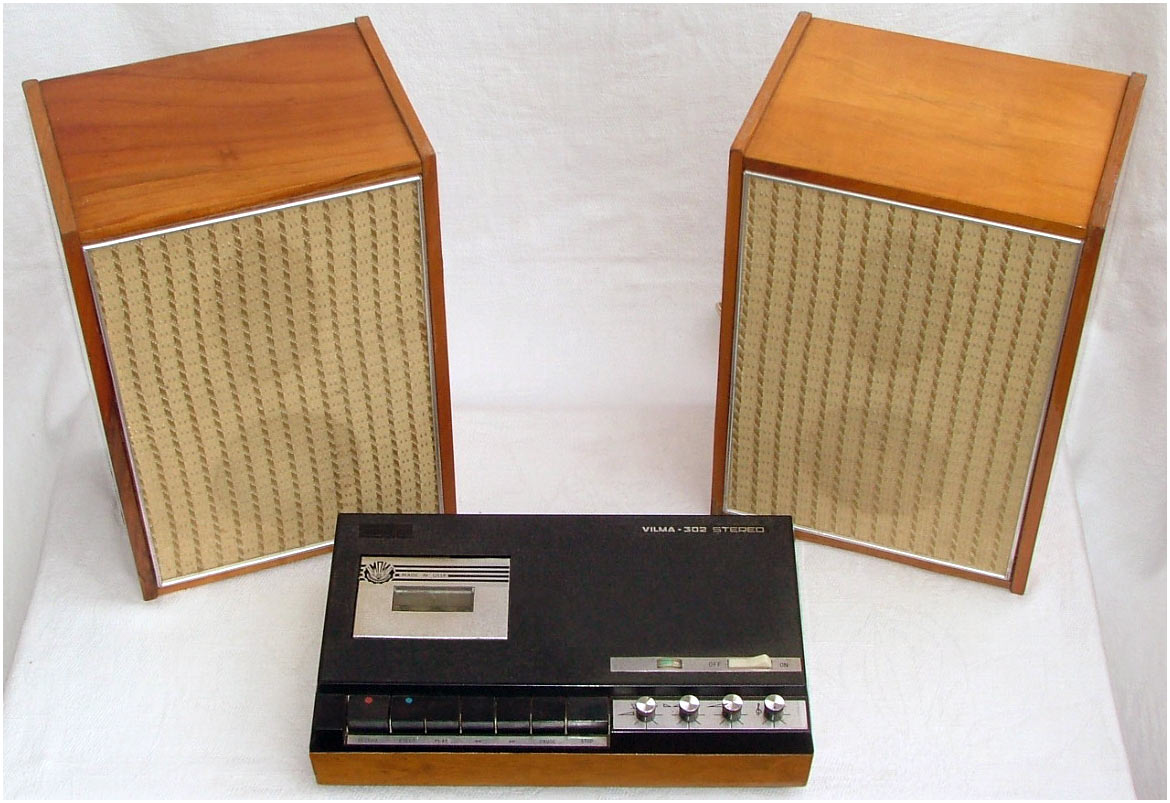
"Wilma-302-stereo" sample of 1972, open speaker in set
The main innovation of the product is not even a stationary form factor and gain, the main reason for the other is the first serial stereo tape recorder. For the year 1972 in the USSR, today this is equivalent to the release of an analogue of the iPhone X in Russia.
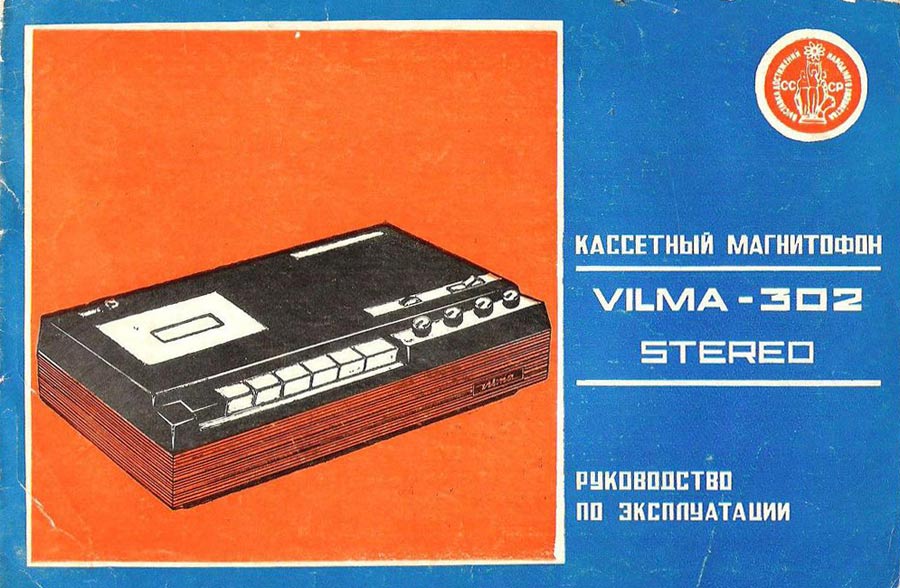
Despite the stereophonicity, stationarity, the presence of speakers and other features, the tape recorder borrows a number of features from the design of portable models, however, like its mirror prototype from Holland. It is quite natural that the device was made on the basis of crush; to reduce the dimensions, the germanium transistors common at that time were used. Tape stripe unsophisticated single-engine, reliable, but thoroughly chewing film, after the first 10 months of work.
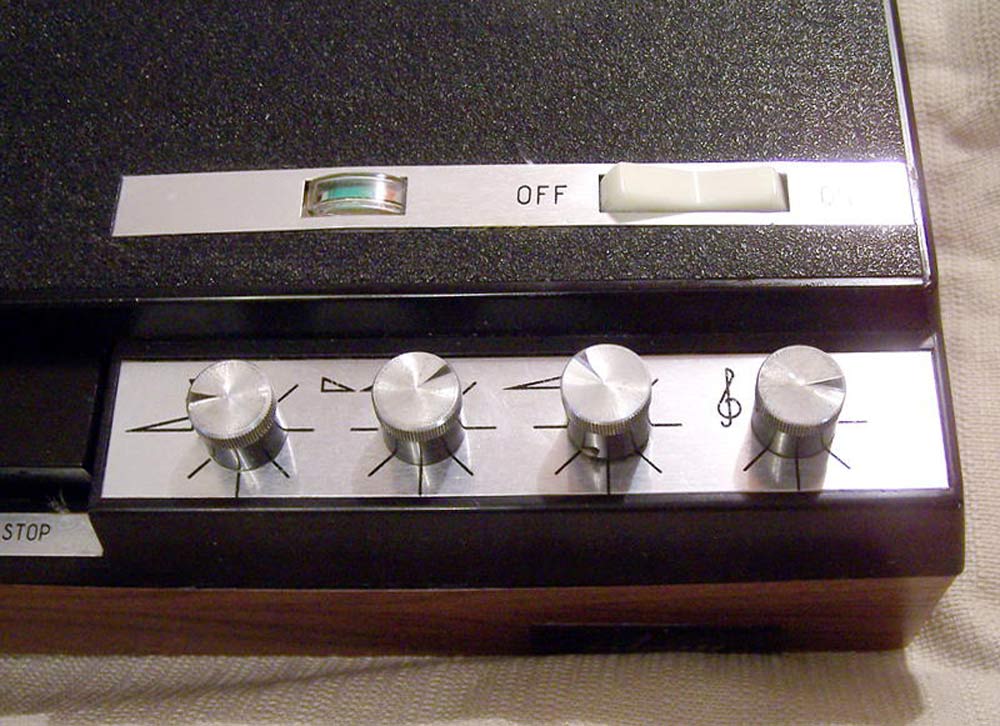
Special attention is given to the speaker, which was equipped with a stationary firstborn. It is quite suitable for that time two-way polochniki with an open acoustic design, equipped with two dynamic loudspeakers: 4-8 and 1-28. They were also borrowed from the original Philips and were also slightly modified.
The stereophonic pioneer possessed the following technical characteristics:
Also of interest are the impressive dimensions of the AC 376x260x190 mm, the mass of which was 5 kg. The engineers of that time remembered and implemented the principle: “the more speakers, the better).
One version of the tape recorder was produced in a stripped-down mono version and was called “Wilma-303”. The release of this device began in 1973. The cropped version appeared due to the need for an inexpensive stationary tape recorder, we decided to sacrifice the stereo. The method of cheapening was used, which today is often used in the development of smartphones. Release the device in the case, apparently indistinguishable from the flagship, but with a catastrophically reduced functionality.
Despite the relative success of the first stationary tape recorder, consumer inquiries continued to grow. This was the cause of management decisions, thanks to which the USSR began mass production of standard tape recorders.
Time passed, and by the beginning of the eighties, once again there was a consumer need for a modern tape deck of the highest class of complexity. Traditionally, the Vilma plant in Vilnius was the first to develop such a device. In 1982, the first production samples of the flagship deck appeared. According to some information, the devices did not fall into a large series, but left an indelible impression on everyone who had a deal with them.

It is believed that the design and circuitry of this development was original. Despite this widespread judgment, I want to note that the layout scheme, tape drive, as well as the implementation of control on an integrated microcircuit in 1982 were not fundamentally new solutions. The design of the device also does not constitute anything innovative for 1982, the tape decks of that time from the famous companies AKAI, SONY, Matsushita Electric were very similar to the Soviet flagship.
Interestingly, the Grundig tape production and assembly mechanism was used, which was equipped with SONY engines with frequency stabilized quartz and also a closed path. A characteristic feature of the mechanism also became the two leading capitals and as many as 3 engines. The path of the tape recorder was equipped with three magnetic heads at once, which was also not typical of other Soviet tape recorders.
The usability of the device has seriously improved the quasi-touch buttons. The tape recorder, in turn, received digital software control. Also, a functional innovation in the Soviet tape cassette-recording industry was the automation of the calibration of the recording and bias current, which were displayed on a special luminescent indicator.
Also fundamentally new and almost unfamiliar to Soviet users was equipping the device with a wireless remote control. To connect other devices in the deck, provided two additional power sockets, which in turn were equipped with a built-in timer.
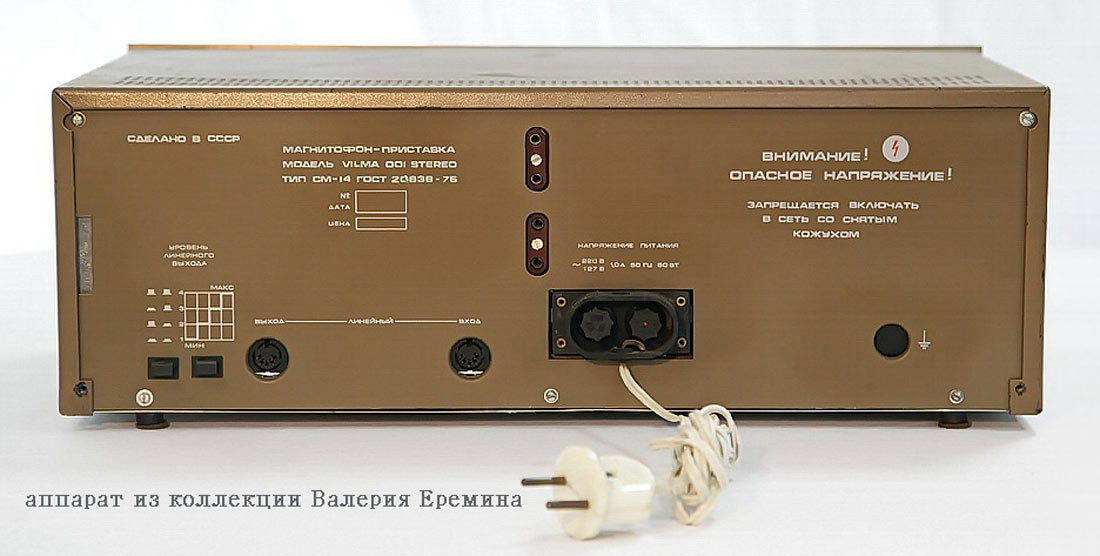
In addition to the minimally necessary playback, recording, pause and rewind, “Wilma 001” included features that even in the West will become commonplace only a decade later, namely: review of tracks, search by pauses. To display the signal level, programs and the current time, gas-discharge indicators were used.
According to some data, in 1982, the wonder tape recorder was sold in the Moscow Orbita store on Smolenskaya Square and cost 1900 rubles, with an average monthly salary in the USSR of about 150 rubles. One vegalab user estimated the cost of a tape recorder at 2 motorcycles “Java” with an engine capacity of 360 cubic cm.
Due to the rarity of the model of reliable data on the specification, we could not be found. Given the class of difficulty, I can assume that the Soviet engineers achieved the highest possible characteristics at that time. Probably, this is the first Soviet tape recorder, made not on distribution, but on the basis of several chips, which, perhaps, adds cult to its status. Today, this model is in demand among collectors as relatively rare.
The year 1982 pleased the Soviet music lovers with another stationary deck, which belonged to the highest class of complexity, namely “Wilma-010-stereo”. It is also an experimental device, which was also originally produced by the Vilnius instrument making. But unlike “001”, it was issued in a larger series, and therefore there is much more information about it.
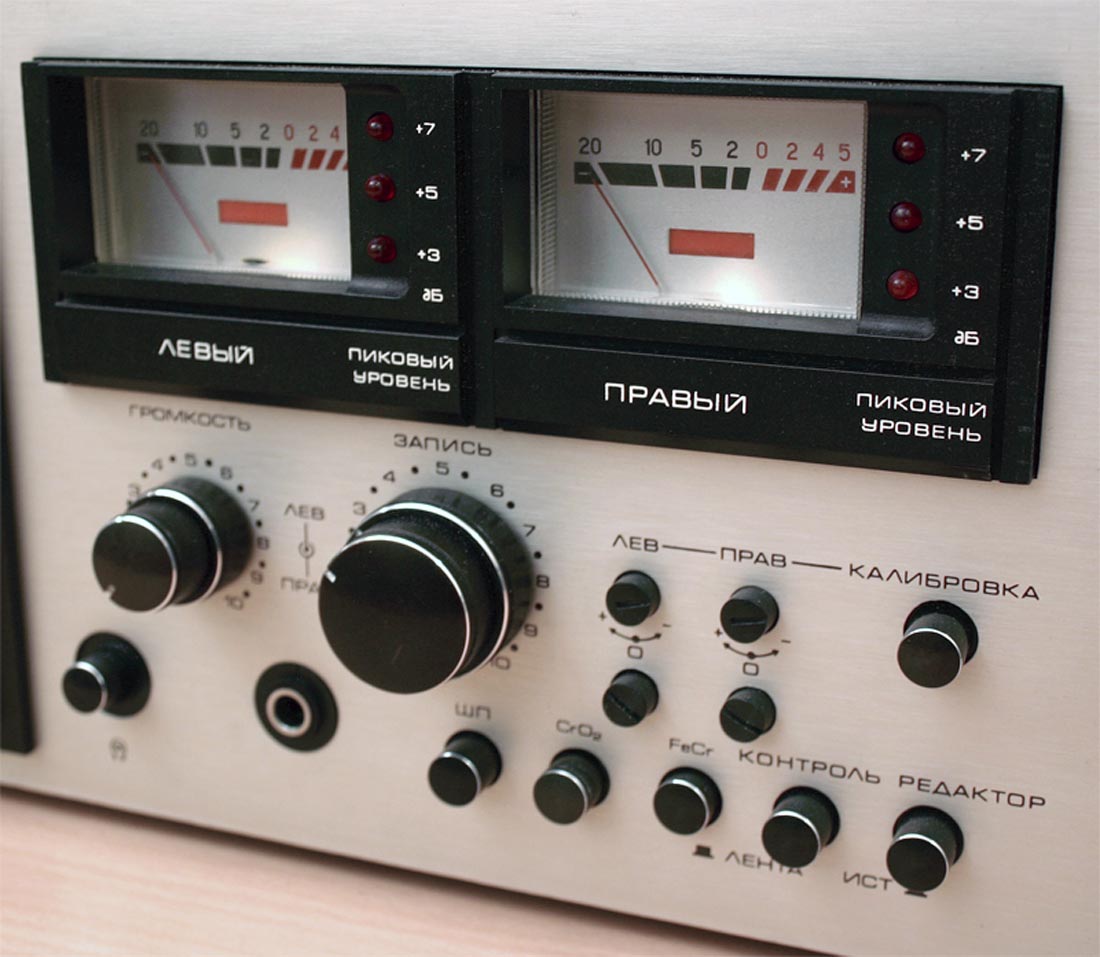
The predecessor of the 010th deck and its almost complete constructive counterpart was a Wilma-102-stereo first-class tape recorder, which began production in a year, in 1981. This deck was one of the first Soviet tape recorders, where they used a twin-engine, closed-drive tape drive and quasi-sensor control. These have become the hallmark of premium models of Soviet cassette decks.

In this model, they thoroughly abandoned spreading and built electronics on the basis of specially designed silicon integrated circuits. The combined magnetic recording-playback head was supposedly of Japanese manufacture. Like the ultrapremium model 001, the “Wilma-102-stereo” was equipped with indicators of the average and quasi-peak signal level, which work both during recording and playback.

It is known that in this and similar models German (FRG) tape mounts from Ernst Plank were originally used. Later, according to rumors, a Soviet copy was developed, which, again, according to rumors, finally finished off the legendary company Ernst Plank, which ingloriously ceased to exist in 1985. Significant achievement can be considered its own system for eliminating interference when switching modes and the use of compander noise “Dolby-B”. Among the rare functions in the Soviet technology were also hitchhiking, a tape sampling device and a flow meter.

In the "Wilma-010-stereo" structurally did not change anything, but the electronic part of the device has undergone significant modernization. So, after installing a more advanced element base, the characteristics of the device have improved significantly.
In particular, the frequency range of operating frequencies was expanded - 1.5 ... 18000 Hz (in version 102, the upper limit did not exceed 14000), the detonation coefficient was 0.15% versus 0.17% for the 102nd model. There were also differences in the design of the pinch roller of the rear shaft.

Despite all these almost unique to Soviet technology and rare for Western features, a thick and large spoon of tar turned out to be in the honey barrel. Most of the tape recorders of the Vilnius plant, the 010th and 102nd models suffered from assembly quality and some components. In this regard, users who paid several average monthly salaries for sound-reproducing devices experienced anger and bewilderment when a newly purchased item had to be repaired long and dreary.

The national flagships demanded that the passik be replaced after a year of work; the rollers, which were made from a polymer that was not resistant to mechanical stress, collapsed and deformed in the tape drive. After a short time, the flagship began to chew on the film and not always saved from this standard cleaning procedure.
Two years after Vilnius, the production of a promising model was mastered at the Lviv PO them. 50th anniversary of October. Interestingly, the engineers of the Ukrainian company quickly identified the problems of Lithuanian development and eliminated a number of significant shortcomings.
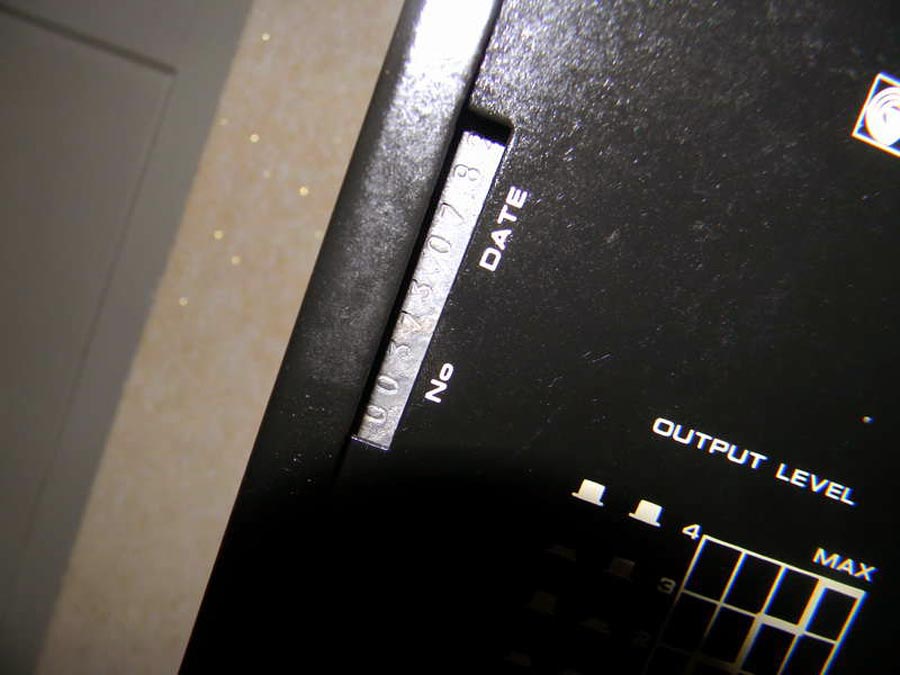
Thus, according to reviews of music lovers of the Soviet era, Lviv decks, called “Phoenix-010-stereo” (since it was planned to use the latter in the “Phoenix” stereo complexes), unlike Lithuanian counterparts, had very reliable Passiki. The rollers made of rubber, also practically did not undergo wear and deformation. On the whole, all Lithuanian children's diseases were successfully decided in Lviv.
Despite Napoleon’s plans, neither “Wilma” nor “Phoenixes” went into a large series, were few in number, and, due to the high cost, are no longer available. Over time, they were abandoned; by 1986, both Ukrainian and Lithuanian production were curtailed. The model served as the basis for a variety of analogues from Wilma and other Soviet enterprises.
Reviews of those who used "Wilma" in those years, leave much to be desired. Despite this, the analysis of the models that were created by this plant in the 70s - 80s, suggests that the company's engineers were well versed in current technical trends and went what is called “the right way”. Lithuanian designers sought to create original models, introduce bold and cutting-edge ideas, and even when copying made their own changes.
The problem "Wilma" were not errors in the design and not a bad grade. It has a detrimental effect on the quality of small items, such as the material of the rollers, the properties of the spikes, as well as problems with quality control of the assembly. In this case, we must pay tribute to the developers of "Vilma", as well as Lviv engineers, who brought to mind some of their development. “Wilma - Phoenix-010-stereo”, if it did not surpass its foreign counterparts, could reach their level, with the Soviet Union lagging behind in this kind of development.
Photo content used:
retrotexnika.ru
www.rw6ase.narod.r
www.radiomuseum.org
As well as photo equipment from the collection of Valery Eremin
Jeans
We trade in electronics. A wide range of audio and video equipment, accessories, switching is presented in our catalog .

It is known that, as in the west, in the USSR portable models were ahead of stationary ones, which is not surprising. At the dawn of its appearance, compact cassettes, as the name implies, were developed, positioned and perceived as a carrier for portable devices. Unexpectedly for the creators of the format, its advantages were appreciated not only by reporters and representatives of special services, but also music lovers. Under the cut about what were the Soviet stationary tape recorders.
Pioneer - deep modernization and plagiarism
The first place in the development of the first stationary cassette tape recorders in the USSR belongs to the Lithuanian instrument-making plant Vilma. As in other cases with the Soviet innovations, they were preceded by the appearance of analogues in capitalist countries. So in 1970, the Dutch-based transnational corporation Philips, the developer and pioneer of the compact cassette recorder, released the Philips N 2400, a stationary cassette deck with a built-in amplifier and speakers.
')

After two years, simplifying and slightly changing the design (removed the “extra” parts of the tape belt, threw out the tape counter, mirrored the arrangement of the functional elements), the Soviet stationary firstborn appeared under the name “Vilma-Stereo”. In the future, the tape recorder will receive a different name, namely “Wilma-302-stereo”. The amplifier has also undergone processing, the power of which has dropped one and a half times (Phillips RMS was 10 W, the nominal power of the Soviet product was 2 W - that is, RMS is about 7 W).

Philips N 2400 1971 model, open speaker included

"Wilma-302-stereo" sample of 1972, open speaker in set
The main innovation of the product is not even a stationary form factor and gain, the main reason for the other is the first serial stereo tape recorder. For the year 1972 in the USSR, today this is equivalent to the release of an analogue of the iPhone X in Russia.

Despite the stereophonicity, stationarity, the presence of speakers and other features, the tape recorder borrows a number of features from the design of portable models, however, like its mirror prototype from Holland. It is quite natural that the device was made on the basis of crush; to reduce the dimensions, the germanium transistors common at that time were used. Tape stripe unsophisticated single-engine, reliable, but thoroughly chewing film, after the first 10 months of work.

Special attention is given to the speaker, which was equipped with a stationary firstborn. It is quite suitable for that time two-way polochniki with an open acoustic design, equipped with two dynamic loudspeakers: 4-8 and 1-28. They were also borrowed from the original Philips and were also slightly modified.
The stereophonic pioneer possessed the following technical characteristics:
- belt drawing speed 4.76 cm / sec;
- detonation coefficient of 0.4%;
- output rated power 2x1 W;
- operating frequency range 63 ... 10000 Hz;
- 40 dB interference level;
- weight 4 kg;
- the price of a tape recorder with acoustics was 275 rubles (3 wages of a young specialist or one and a half wages of the middle manager).
Also of interest are the impressive dimensions of the AC 376x260x190 mm, the mass of which was 5 kg. The engineers of that time remembered and implemented the principle: “the more speakers, the better).
One version of the tape recorder was produced in a stripped-down mono version and was called “Wilma-303”. The release of this device began in 1973. The cropped version appeared due to the need for an inexpensive stationary tape recorder, we decided to sacrifice the stereo. The method of cheapening was used, which today is often used in the development of smartphones. Release the device in the case, apparently indistinguishable from the flagship, but with a catastrophically reduced functionality.
Despite the relative success of the first stationary tape recorder, consumer inquiries continued to grow. This was the cause of management decisions, thanks to which the USSR began mass production of standard tape recorders.
"Wilma 001" - the recorder is not for everyone
Time passed, and by the beginning of the eighties, once again there was a consumer need for a modern tape deck of the highest class of complexity. Traditionally, the Vilma plant in Vilnius was the first to develop such a device. In 1982, the first production samples of the flagship deck appeared. According to some information, the devices did not fall into a large series, but left an indelible impression on everyone who had a deal with them.

It is believed that the design and circuitry of this development was original. Despite this widespread judgment, I want to note that the layout scheme, tape drive, as well as the implementation of control on an integrated microcircuit in 1982 were not fundamentally new solutions. The design of the device also does not constitute anything innovative for 1982, the tape decks of that time from the famous companies AKAI, SONY, Matsushita Electric were very similar to the Soviet flagship.
Interestingly, the Grundig tape production and assembly mechanism was used, which was equipped with SONY engines with frequency stabilized quartz and also a closed path. A characteristic feature of the mechanism also became the two leading capitals and as many as 3 engines. The path of the tape recorder was equipped with three magnetic heads at once, which was also not typical of other Soviet tape recorders.
The usability of the device has seriously improved the quasi-touch buttons. The tape recorder, in turn, received digital software control. Also, a functional innovation in the Soviet tape cassette-recording industry was the automation of the calibration of the recording and bias current, which were displayed on a special luminescent indicator.
Also fundamentally new and almost unfamiliar to Soviet users was equipping the device with a wireless remote control. To connect other devices in the deck, provided two additional power sockets, which in turn were equipped with a built-in timer.

In addition to the minimally necessary playback, recording, pause and rewind, “Wilma 001” included features that even in the West will become commonplace only a decade later, namely: review of tracks, search by pauses. To display the signal level, programs and the current time, gas-discharge indicators were used.
According to some data, in 1982, the wonder tape recorder was sold in the Moscow Orbita store on Smolenskaya Square and cost 1900 rubles, with an average monthly salary in the USSR of about 150 rubles. One vegalab user estimated the cost of a tape recorder at 2 motorcycles “Java” with an engine capacity of 360 cubic cm.
Due to the rarity of the model of reliable data on the specification, we could not be found. Given the class of difficulty, I can assume that the Soviet engineers achieved the highest possible characteristics at that time. Probably, this is the first Soviet tape recorder, made not on distribution, but on the basis of several chips, which, perhaps, adds cult to its status. Today, this model is in demand among collectors as relatively rare.
We speak Vilnius, we mean Lviv
The year 1982 pleased the Soviet music lovers with another stationary deck, which belonged to the highest class of complexity, namely “Wilma-010-stereo”. It is also an experimental device, which was also originally produced by the Vilnius instrument making. But unlike “001”, it was issued in a larger series, and therefore there is much more information about it.

The predecessor of the 010th deck and its almost complete constructive counterpart was a Wilma-102-stereo first-class tape recorder, which began production in a year, in 1981. This deck was one of the first Soviet tape recorders, where they used a twin-engine, closed-drive tape drive and quasi-sensor control. These have become the hallmark of premium models of Soviet cassette decks.

In this model, they thoroughly abandoned spreading and built electronics on the basis of specially designed silicon integrated circuits. The combined magnetic recording-playback head was supposedly of Japanese manufacture. Like the ultrapremium model 001, the “Wilma-102-stereo” was equipped with indicators of the average and quasi-peak signal level, which work both during recording and playback.

It is known that in this and similar models German (FRG) tape mounts from Ernst Plank were originally used. Later, according to rumors, a Soviet copy was developed, which, again, according to rumors, finally finished off the legendary company Ernst Plank, which ingloriously ceased to exist in 1985. Significant achievement can be considered its own system for eliminating interference when switching modes and the use of compander noise “Dolby-B”. Among the rare functions in the Soviet technology were also hitchhiking, a tape sampling device and a flow meter.

In the "Wilma-010-stereo" structurally did not change anything, but the electronic part of the device has undergone significant modernization. So, after installing a more advanced element base, the characteristics of the device have improved significantly.
In particular, the frequency range of operating frequencies was expanded - 1.5 ... 18000 Hz (in version 102, the upper limit did not exceed 14000), the detonation coefficient was 0.15% versus 0.17% for the 102nd model. There were also differences in the design of the pinch roller of the rear shaft.

Despite all these almost unique to Soviet technology and rare for Western features, a thick and large spoon of tar turned out to be in the honey barrel. Most of the tape recorders of the Vilnius plant, the 010th and 102nd models suffered from assembly quality and some components. In this regard, users who paid several average monthly salaries for sound-reproducing devices experienced anger and bewilderment when a newly purchased item had to be repaired long and dreary.

The national flagships demanded that the passik be replaced after a year of work; the rollers, which were made from a polymer that was not resistant to mechanical stress, collapsed and deformed in the tape drive. After a short time, the flagship began to chew on the film and not always saved from this standard cleaning procedure.
Two years after Vilnius, the production of a promising model was mastered at the Lviv PO them. 50th anniversary of October. Interestingly, the engineers of the Ukrainian company quickly identified the problems of Lithuanian development and eliminated a number of significant shortcomings.

Thus, according to reviews of music lovers of the Soviet era, Lviv decks, called “Phoenix-010-stereo” (since it was planned to use the latter in the “Phoenix” stereo complexes), unlike Lithuanian counterparts, had very reliable Passiki. The rollers made of rubber, also practically did not undergo wear and deformation. On the whole, all Lithuanian children's diseases were successfully decided in Lviv.
Despite Napoleon’s plans, neither “Wilma” nor “Phoenixes” went into a large series, were few in number, and, due to the high cost, are no longer available. Over time, they were abandoned; by 1986, both Ukrainian and Lithuanian production were curtailed. The model served as the basis for a variety of analogues from Wilma and other Soviet enterprises.
Total
Reviews of those who used "Wilma" in those years, leave much to be desired. Despite this, the analysis of the models that were created by this plant in the 70s - 80s, suggests that the company's engineers were well versed in current technical trends and went what is called “the right way”. Lithuanian designers sought to create original models, introduce bold and cutting-edge ideas, and even when copying made their own changes.
The problem "Wilma" were not errors in the design and not a bad grade. It has a detrimental effect on the quality of small items, such as the material of the rollers, the properties of the spikes, as well as problems with quality control of the assembly. In this case, we must pay tribute to the developers of "Vilma", as well as Lviv engineers, who brought to mind some of their development. “Wilma - Phoenix-010-stereo”, if it did not surpass its foreign counterparts, could reach their level, with the Soviet Union lagging behind in this kind of development.
Photo content used:
retrotexnika.ru
www.rw6ase.narod.r
www.radiomuseum.org
As well as photo equipment from the collection of Valery Eremin
Jeans
We trade in electronics. A wide range of audio and video equipment, accessories, switching is presented in our catalog .
Source: https://habr.com/ru/post/446828/
All Articles